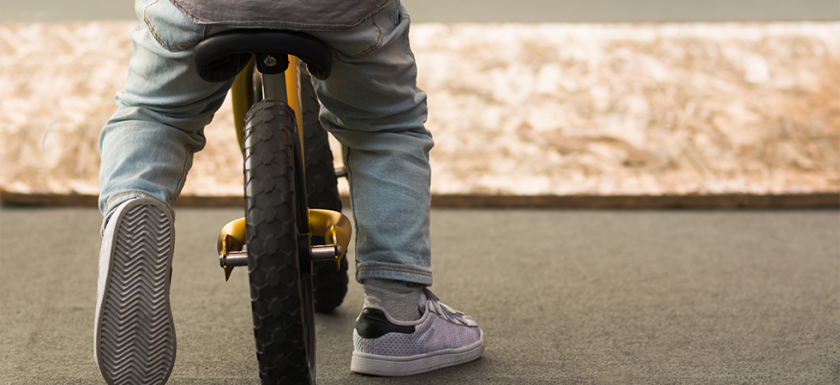
This summer, I taught my eight-year-old son to ride a bicycle. He learned in less than one day without using training wheels. What superpower did we tap into to achieve this feat? The power of overcoming fear.
My son insisted that we install training wheels because he was afraid of falling and getting hurt. It’s much the same fear that can keep kids from trying new things or going to new places. This fear is a healthy and natural reaction that we, as parents can either help them overcome or, often inadvertently, make much worse.
Fear, more than anything else, is what blocks us from learning new concepts and trying new things. Whether you are teaching your kids something new or you are embarking on a new adventure with the family, we have to attack this emotion head on, and we can apply three techniques.
Addressing Fear
The three of most common ways for parents to address fear are:
- Accept and Protect
- Dismiss and Do
- Address and Overcome
Let’s break these down.
Accept and Protect
In this technique, you acknowledge the fear, let your child know it’s alright to be afraid and then leave them free not to do it. Accepting and protecting needs to be done with care because it can a good or bad technique depending on how it’s applied.
For example, if you don’t challenge your children to move outside their comfort level, they will never try new things, be timid, and live their lives dictated by fear. On the other hand, we can make fears worse by forcing kids to do or try something they are not ready to do.
Just don’t them quit until they have tried a small step. For example, assume your child can swim but is afraid to jump off a diving board. If it is too overwhelming for them, you can say, “Okay, I won’t make you do that if you will jump into the water from the side of the pool.” Then you make them promise that next time they will try to jump from the diving board.
In this way, you are accepting that it’s a bit intimidating and protecting them, but are still encouraging them to overcome their fear. This can also set up the next technique, Dismiss and Do.
Dismiss and Do
This method could also be called “Get Over It!” and is the easiest way to feel like we are building hardy, brave souls.
We dismiss the fear by saying, “Come on, there’s nothing to be afraid of, just do it!” However, this often forgets or ignores the fact that, at least to a child, there is, in fact, something of which to be afraid.
A better way to use this technique is to address the fear first, then dismiss it. Going back to the diving board example, you could acknowledge the fear is by saying, “I know that it looks high, but you can do it. You just jump then swim; I’ll be right here in the pool.”
While this can often be effective in getting a child to try a simple task you know they can accomplish the first try, sometimes just trying can be too daunting. In this case, we can combine Accept and Protect with Address and Do It.
We should also remember that if we dismiss the fear, then something goes wrong, we have justified the initial apprehension. Now we lose credibility in determining what there is to fear. Not only can this reinforce the fear, but it could also cause the child to despise the activity.
Which brings us to our final technique, Address and Overcome.
Address and Overcome
This technique is a hybrid of the previous methods. We start by addressing the fear by letting the child know that it’s okay to be afraid, then give them the tools to overcome the fear.
The key to acknowledging the fear is to get the child talking about what outcome they are dreading. To return to the diving board example, the child might say that it’s very high and they are afraid they will get hurt.
After we know why they are afraid, we can address it. You could say something like, “Yes it is very high, and I was scared the first time I leapt off a diving board too. You know what, though, the first time I did it was so much fun I couldn’t wait to do it again.” Once we have addressed the fear, we are ready to help them overcome it.
We can do this two ways, just have them do it, or break it down into smaller, easier tasks. Breaking it down into smaller tasks looks a lot like what we did in Accept and Protect, where they do a small part like jumping into the water from the side of a pool, except that, after a couple of tries, we encourage them to do the next step when they are ready.
This is the technique I used to teach my son to ride his bicycle in less than a day and without training wheels. From that experience, I broke the Address and Overcome technique into these four steps:
- Remove the Pedals
- Support – But Not Too Much
- Let Them Ride
- Stop Teaching and Start Cheering
Next month, we will break these steps down into more detail. Meanwhile, what do you think? Do you have another technique that works for you? Let me know in the comments.